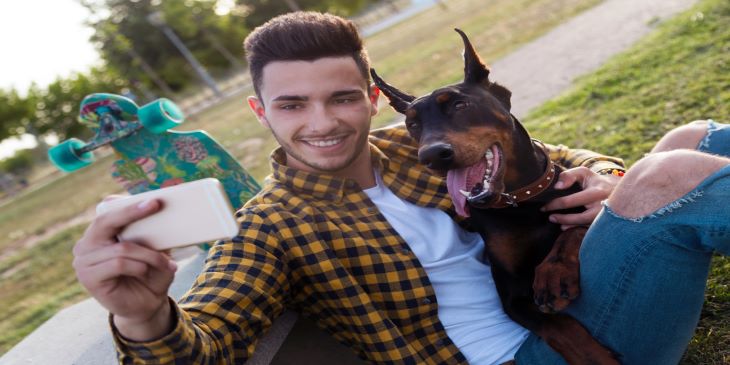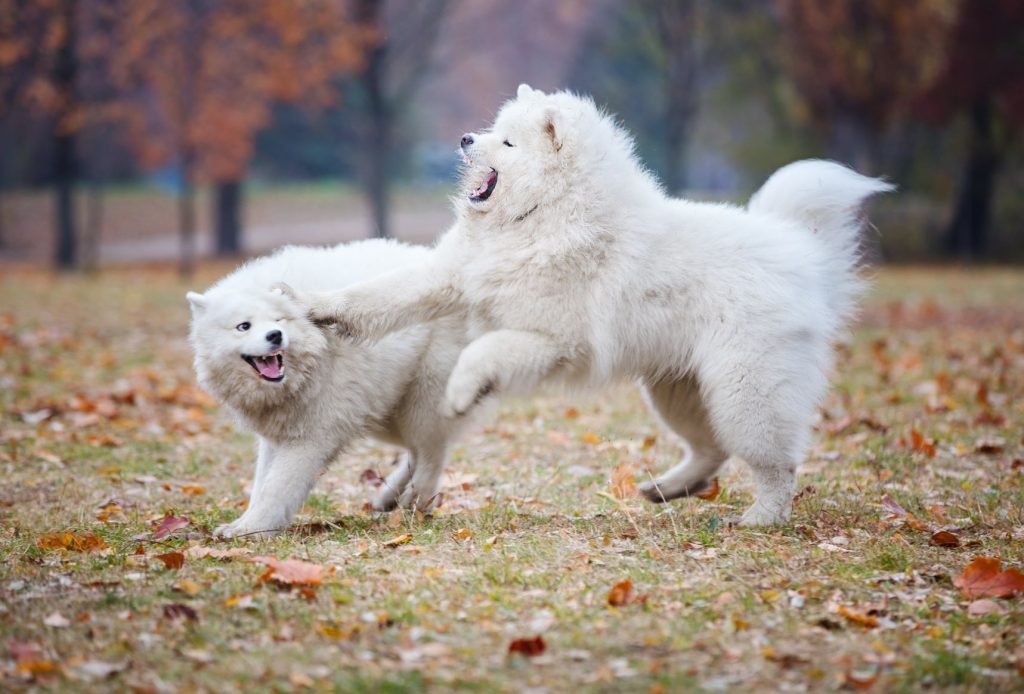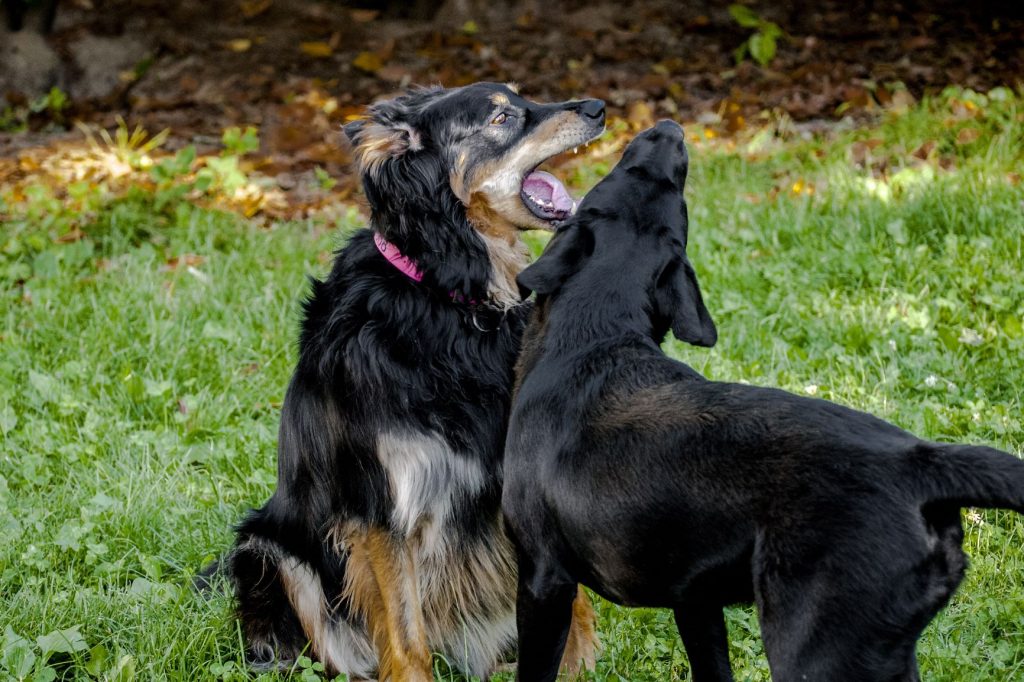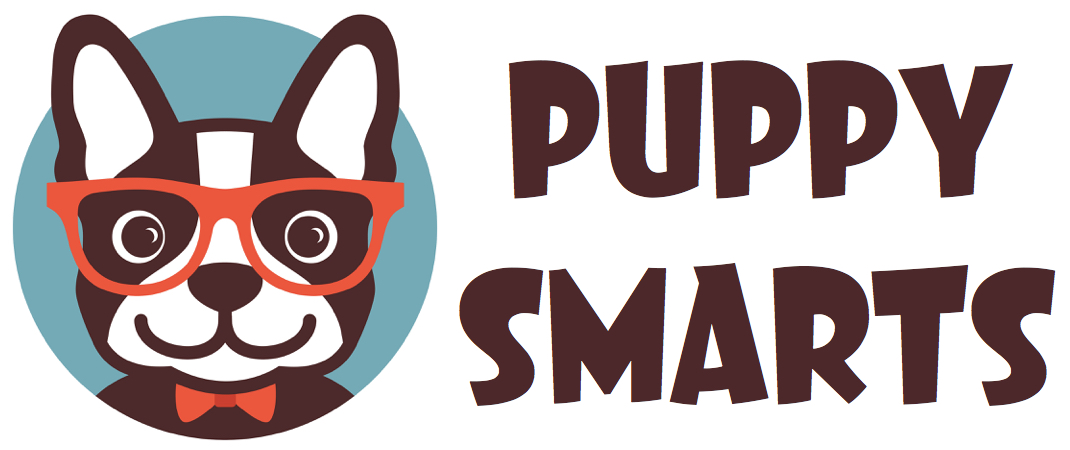12+ Essential Rules of Dog Park Etiquette

Contents
There are lots of mixed opinions about dog parks… some pet parents think they’re the greatest thing since sliced bread, while others avoid them like the plague. Dog parks should be the perfect place to socialize your pooch and let him get some exercise, but that’s not always the case.
As a veterinary technician, I’ve heard countless stories of dogs being completely traumatized after a fight with another dog at the dog park. This type of experience can affect your dog’s confidence and behavior for the rest of his life. Not to mention the pooch who leaves the park with fleas, ticks, or even worse, some kind of virus that he didn’t have when he got there.
So, are dog parks a good idea or a bad one? The answer is, both. It really depends on your dog, the other people who use it, and the park itself. Unfortunately, some of these aspects will be completely out of your control.
Thankfully, there are some things you can do to improve the experience for you and your pooch. Start by choosing a dog park that’s well-maintained and well-constructed. It should be clean, the landscaping should be neat and tidy, and the fences should be kept in perfect repair.
But, what else can you do to ensure a positive experience? It all comes down to dog park etiquette. If everyone understands and follows the same common-sense rules, the experience can be doggie heaven. Let’s dive into the 12 common-sense rules of dog park etiquette everyone should follow.

12 Rules of Etiquette Everyone Should Follow at the Dog Park
Every dog park should have its own set of rules. They are normally posted somewhere near the entrance of the park, listed on the park’s website, or available in the park office. If there are no rules specified, that probably indicates that the park is not well-monitored, and you will need to be extra diligent about ensuring your pup’s safety.
Here are the most common rules everyone should follow at the dog park, whether they’re posted or not.
- All dogs that are more than six months old should be neutered or spayed. Never bring a female dog to the dog park if she’s in season.
- Dogs must be supervised at all times. They absolutely cannot be left unattended.
- All dogs should be wearing a current rabies tag. For your dog’s safety and the safety of other dogs in the park, talk to your vet about which vaccines he recommends and be sure they’re kept up to date.
- Owners must clean up after their dogs promptly. Watch your dog and be prepared to clean up after him/her when the inevitable happens.
- Aggressive dogs should never be brought to the dog park. Dogs who demonstrate aggressive behavior toward humans or other dogs should be asked to leave and not allowed to return.
- Young children should not be allowed to enter the off-leash area of the dog park. If they are allowed, they must be closely supervised and no running, rough, or loud play should be allowed.
- If you have more than two dogs, bring a second person along to help you supervise. You can only be in so many places at once.
- Extra gear, such as harnesses, choke collars, prong collars, or shock collars should be removed before playtime. A plain, buckle collar with the dog’s rabies and ID tag should be on the dog at all times, but that’s it.
- Don’t take your dog off his/her leash before you enter the off-leash area of the park.
- If the park has size restrictions for certain areas, please honor them.
- Do not smoke or eat in the off-leash area.
- Use common sense. Be polite and considerate of other people using the park.
Is Your Dog a Good Candidate for the Dog Park?
Some dogs are not good candidates for the dog park, and this is the main reason so many dogs end up traumatized during playtime. Dog parks are not the place to work with a dog that has a serious behavior problem with humans or other dogs. Dogs with behavior issues should be socialized and trained in a controlled environment first. Here’s what makes a dog a good candidate for the dog park.
- The dog is outgoing and friendly, but not obnoxious or overbearing toward pets or people.
- The dog is socialized and confident, not overly timid, fearful, or aggressive in new situations.
- Clearly, the dog should understand basic obedience like sit, stay, and especially come when called. Dogs that are likely to jump on people or be otherwise unruly shouldn’t be brought to the park
- Some barking is to be expected and is perfectly acceptable, but if your dog barks continuously and is likely to disturb people or pets, don’t take him to a public dog park.
- Ensure that your dog is healthy before taking him to the dog park. If your dog is older and has arthritis or joint issues, the dog park may not be a good idea. The same goes for dogs with weakened immune systems, such as from chemotherapy drugs. If your dog has a health condition, consult with your vet for advice.
- Don’t bring a dog that’s infested with fleas or ticks to the dog park and be sure to check your dog over carefully to ensure that he doesn’t have any hitchhikers when you leave.

Additional Rules for Pet Parents at the Dog Park
As a pet parent, you’re responsible for your dog’s behavior. It’s your responsibility to ensure that the rules of etiquette are followed by you and your dog. Here are some additional rules for humans at the dog park.
- If you are thinking about trying out a new dog park, visit the park without your dog first. Observe the overall atmosphere of the park and check for cleanliness and maintenance.
- The first time you visit a new park with your dog, try to go at a slow time so your pooch has a chance to check out the new environment without the stress of a bunch of unfamiliar dogs.
- Before entering the park with your dog, observe the other dogs at play for a few minutes. If you see a dog that’s causing problems, it’s safer to come back another time, or simply wait until they leave.
- Always follow the park’s rules, even if you disagree with them.
- It’s better to leave small children at home. Dogs get excited during playtime and your child could easily be knocked down and hurt. Even worse, some dogs aren’t socialized with kids and could bite or even attack your child.
- Leave toys at home to avoid conflicts with other dogs. Keep treats to a minimum, use discretion, and make sure your dog consumes any treats you dole out right away.
- Don’t bring young puppies who haven’t been vaccinated to the park.
- If your dog is causing a problem, be an adult and remove him from the park.
- If someone else’s dog is being too rough, it’s ok to ask them politely to get the dog under control, but you might be better off just coming back at another time to avoid confrontation. NEVER discipline someone else’s dog. If a particular dog is causing a problem regularly or poses a danger to other pets or people, do your best to report the issue to park management.
In Summary
Dog parks can be a lot of fun for you and your pup, as long as you follow some common-sense rules. Be realistic about your dog’s personality and behavior, and get any issues resolved before going to a dog park. Be sure to check out the park in advance, and always look for issues before you enter the park. Most importantly, follow the rules so that you, your pooch, and other park users can continue to enjoy playtime at the dog park!

Anna,,,,,, I Love DOG’S …..But when I go to leave my house,,,, anywhere from 4—-6 DOG’S BARKING OMG EVERY TIME ,,,WHEN I COME HOME IF THERE OUTSIDE YET IT’S THE SAME WAY…..NOW THESE DOG’S HAVE ALL BEEN AROUND SEVERAL YEARS ,,,,, THEY HAVE GOT TO KNOW WHO I AM …. WHY DO THEY CONTINUE THIS HABIT ???? I WOULD APPRECIATE ANYTHING TO HELP STOP THIS 🙏😇❤️